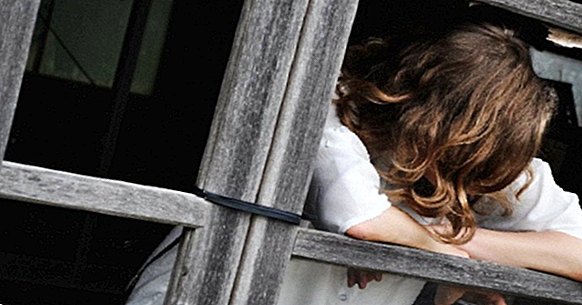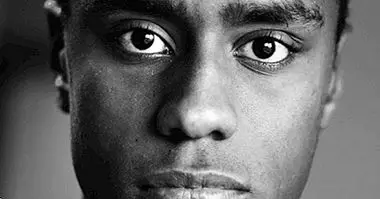Types of Anxiety Disorders and their characteristics
Feeling anxiety is a normal emotional response. Whether just before an exam, due to a conflict at work or just before making an important decision, anxious symptoms can manifest. In fact, in the face of uncertain or stressful situations, it is normal to experience this phenomenon .
However, when anxiety affects a person in a way that causes him to function abnormally in one of the areas of his life (relationships with others, school, work, etc.), then we are talking about an anxiety disorder .
Characteristics of anxiety disorder
Individuals may experience anxiety differently, and while some suffer acute attacks of panic from their catastrophic thoughts, others experience anxious symptoms in social situations. Also, there are people who have excessive, irrational and persistent worry and anxiety. Anxiety disorders cause a lot of suffering to the person who suffers, and is one of the most frequent reasons for consultation.
Anxiety is a condition that causes both physical and psychological symptoms, and affects millions of people around the world.
The symptomatology of this pathology is classified into three groups:
- Behavioral : Producing changes in our way of acting.
- Cognitive : the way of thinking or how we perceive the environment are also affected by anxiety.
- Physiological : Causes a series of physiological responses, such as palpitation, dry mouth, etc.
Types of anxiety and their characteristics
Since people experience anxiety disorders in different ways, psychologists and psychiatrists have created categories for each of the different types of anxiety. They are the following.
- Obsessive Compulsive Disorder (OCD)
- Post Traumatic Stress Disorder (PTSD)
- Panic disorder
- Generalized Anxiety Disorder (ADD)
- Social phobia
- Agoraphobia
- Specific phobia
In the following lines we will delve into each of these disorders and explain their characteristics:
1. Obsessive Compulsive Disorder (OCD)
Obsessive-compulsive disorder or OCD is a common anxiety disorder . It is characterized because the person who suffers it shows behaviors that may seem strange.
In some cases, anxious thoughts may be beneficial for us, as they keep us alert. For example, there is nothing wrong with checking that the door of our house is closed before going to bed, so we make sure no one steals from us. The problem arises when after having checked the doors and windows we repeat the same behavior again and again, because we think that if we do not do something bad it will happen to us.
This disorder is characterized by obsessive and compulsive behaviors. Obsessions refer to intrusive thoughts, ideas or images, which cause worry and anxiety and appear again and again in the mind. Compulsions are the actions that are carried out to reduce the anxiety caused by obsessions.
For example, an obsession may be the following thought: "if we do not turn on and turn off the room switch ten times in a row we will die". Compulsion, on the other hand, is the act of turning the lights on and off. Failure to perform compulsions causes great discomfort and a strong feeling of anxiety.
2. Posttraumatic Stress Disorder (PTSD)
PTSD occurs when an individual suffers a traumatic situation that has caused a strong emotional and stressful impact . People with PTSD continually relive the fact that triggered the disorder, for example, being a victim of rape or having participated in a war.
If the emotional impact is very large, the discomfort of people can last for years, and some people need psychological support because they are unable to overcome it on their own.
Symptoms include:
- Relive the trauma : they can relive the trauma constantly, for example, with nightmares.
- Respond to stressors : the person can relive the event in the presence of stressors similar to the situation or the scene of the event. For example, when listening to loud noises or when recognizing a similar smell.
- Recurrent anxiety : the individual experiences anxiety on a regular basis.
- Emotional problems : the person also experiences emotional problems, for example, disinterest in relationships with others.
3. Panic disorder
Panic disorder is characterized because the person suffering from it has feelings that he is going to die and that he lacks air . They are sensations that the person perceives as very real, which causes him an intense fear and, consequently, great discomfort. In severe cases, the patient must be hospitalized.
The symptoms are highly debilitating and include:
- Unexpected and repeated panic attacks.
- Once the first panic attack has occurred, the person thinks that another one will happen, at least for a month.
- Concern for the symptoms of the panic attack. For example, thinking that it is an undiagnosed medical illness or that they will suffer a heart attack.
- Changes in your habitual behavior, such as avoiding sports because of the symptoms that the person experiences.
- The attacks usually last half an hour, and the peak occurs at around 10 minutes.
- Its frequency can vary, from several times a day to once every few years.
4. Generalized Anxiety Disorder
Although many people experience anxiety at some specific moments: when they are going to play an important basketball game, before an exam or when they are going to meet a girl they love for the first time, Individuals with generalized anxiety disorder (ADD) feel worry or anxiety most of the time , not only in situations that can cause stress.
In the TAD, the worries are persistent (they occur half of the days at least during six months), intense, irrational and interfere in the normal functioning of some area of the affected person's life. For example, work, friends or family.
5. Social phobia
It is common to think that shyness and social phobia are the same, but in reality it is not like that . Social phobia is a serious disorder, and people who suffer from it feel so bad in social situations, that they are unable to control their fear and anxiety, so they often avoid this type of situation.
Feeling shy about speaking in public is normal, but when that fear and anxiety interrupt the normal functioning of the individual's life, it becomes a severe problem. People with social phobia can avoid all kinds of social situations, for example, going to eat at a restaurant, because they live with a great fear of being judged or observed.
6. Agoraphobia
Agoraphobia is the irrational fear of being in public spaces and open places , as parks or streets. But public spaces are not the root of the problem, but the possibility of suffering a panic attack and being unprotected in these places. That is why these people do not want to leave their homes and avoid traveling to any place other than their home and office. On many occasions, people suffering from agoraphobia also suffer from panic attacks or PTSD.
7. Specific phobias
Phobias are irrational fears of a specific stimulus, for example, a situation, an object, a place or an insect. Therefore, when a person suffers from this disorder he does everything possible to avoid that situation or object that causes anxiety and discomfort.
There are different types of phobias, for example, arachnophobia (phobia of spiders) or coulrophobia (fear of clowns). Some of them really curious. You can discover them in our article: "The 15 rarest phobias that exist."



















